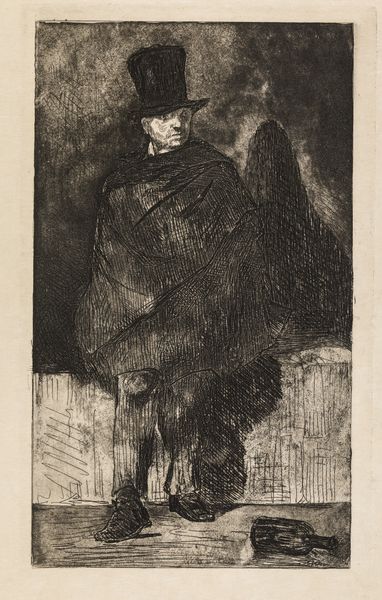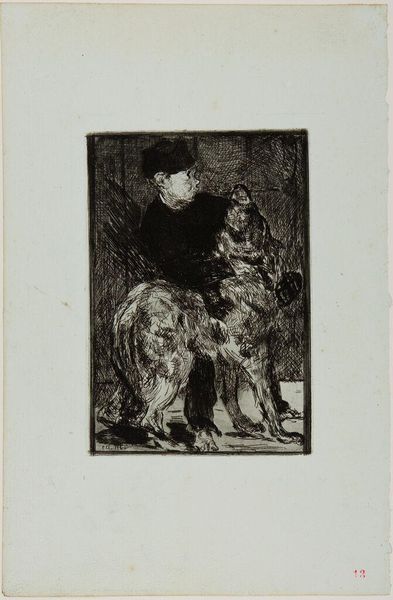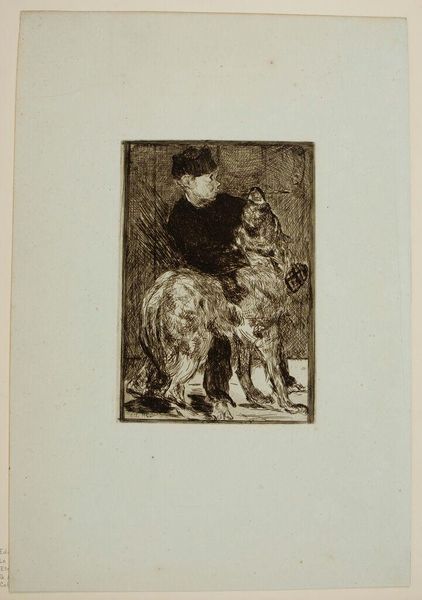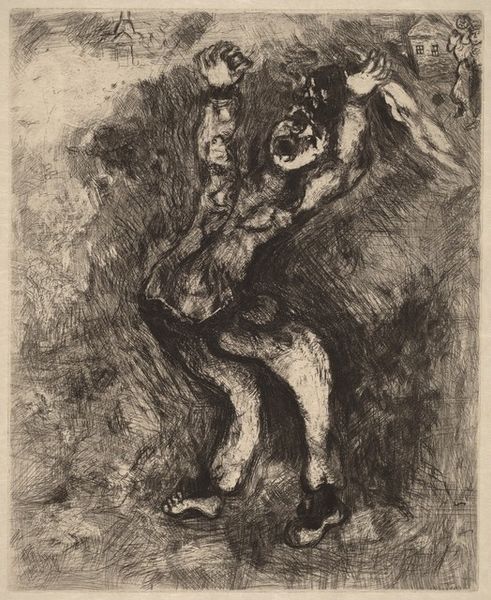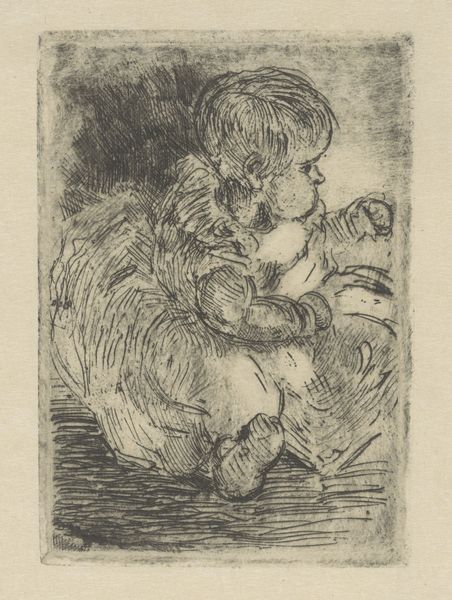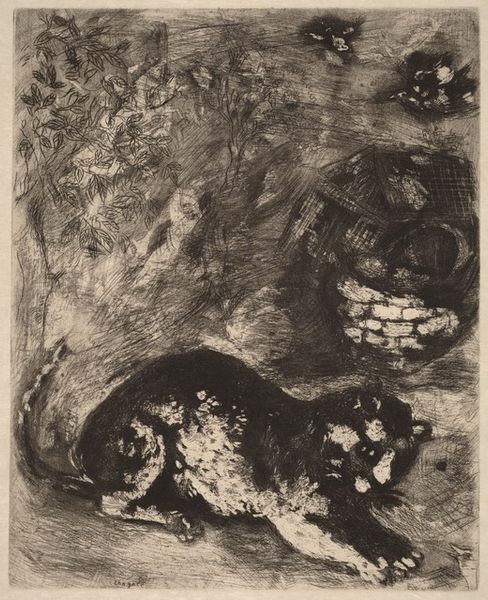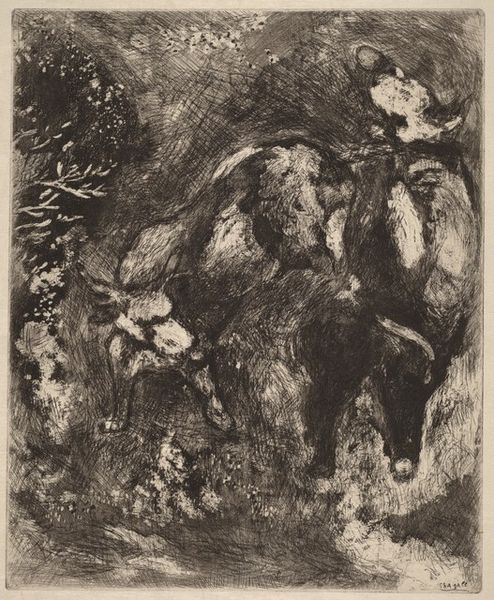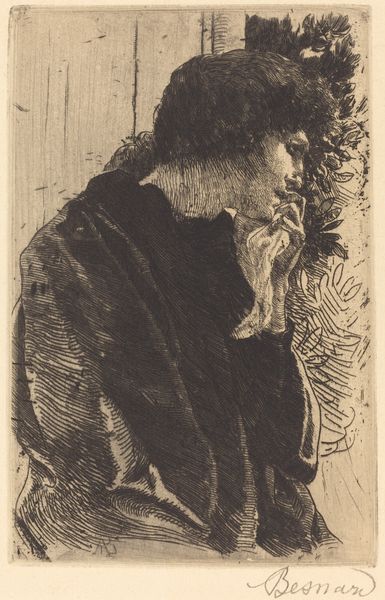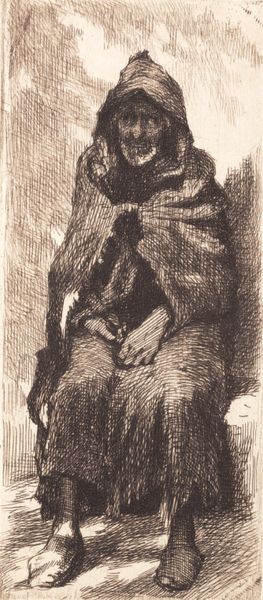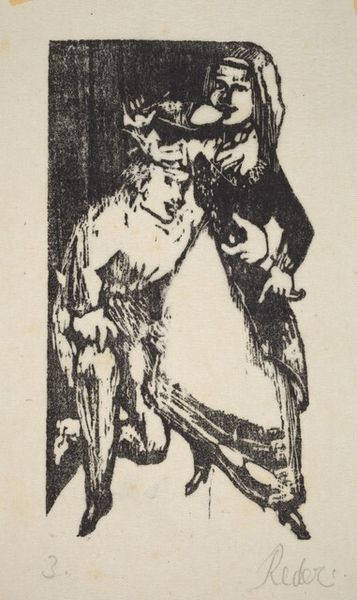
drawing, print, etching
#
portrait
#
pencil drawn
#
drawing
# print
#
etching
#
dog
#
boy
#
figuration
#
pencil drawing
#
genre-painting
#
realism
Dimensions: plate: 8 x 5 9/16in. (20.3 x 14.1cm) sheet: 14 1/2 x 9 1/2in. (36.8 x 24.1cm)
Copyright: Public Domain
Curator: Manet’s "Boy and Dog," created in 1862, employs the etching technique, rendering a domestic tableau in stark monochrome. Editor: Gosh, it’s quite grainy. It almost vibrates with nervous energy. That dog seems HUGE for such a small boy! Curator: Indeed. Observe how Manet uses hatching and cross-hatching to create depth and texture. The contrast between the dark shadows and the lighter areas defines the forms. It's a very rudimentary approach in its execution, though far from elementary in construction. Editor: Right. And the way he captures the bond… the kid’s completely engrossed in this slightly awkward hug. The dog looks patient, maybe even a little resigned. Been there, buddy! But there's real affection pouring out of it, you can see it, even without all the clarity of a full painting. Curator: Note the asymmetry. The boy is positioned slightly off-center, and the dog’s body dominates the composition. This imbalance creates a sense of immediacy, a snapshot of everyday life devoid of artificial sentiment. Editor: Well said. But it is quite a simple image, stripped down. He focuses on their linked stance. Are we meant to notice that the kid has bare feet, somehow more natural because of the implied dirtiness, in contrast with his formal cap? A class thing maybe? Curator: Manet was certainly interested in portraying modern life, often without the romanticism associated with traditional academic art. And yes, details such as bare feet, or other such seemingly casual features serve the semiotic purpose of contrasting expectation and reality in conventional portraits of the time. Editor: This piece does feel different… very authentic. It's rough, and quick, and that gives it this raw, captivating immediacy. Almost like catching a private moment on the sly. Curator: It exemplifies his move towards capturing fleeting moments and the gritty reality of modern urban life, away from idealized, historical subjects. Editor: I’d call this a lovely example of how it’s the simplest stories that tend to stick. It has the ring of truth about it. Curator: A pertinent summary indeed, of Manet's technical prowess and perceptive commentary in this work.
Comments
No comments
Be the first to comment and join the conversation on the ultimate creative platform.
